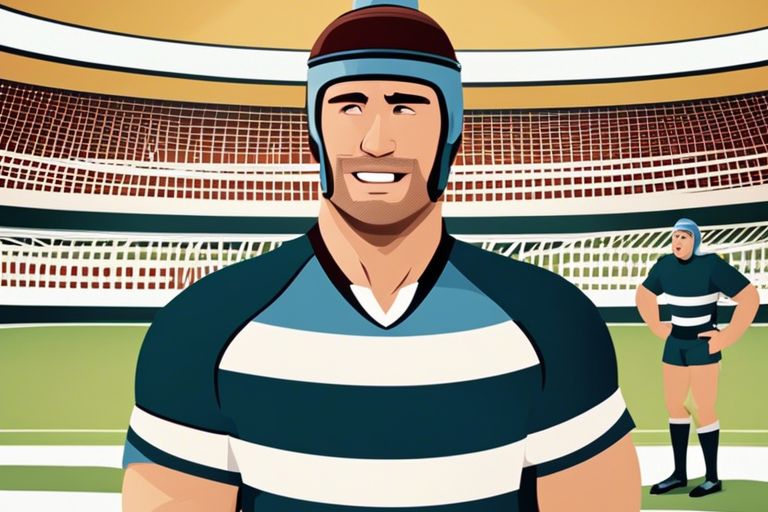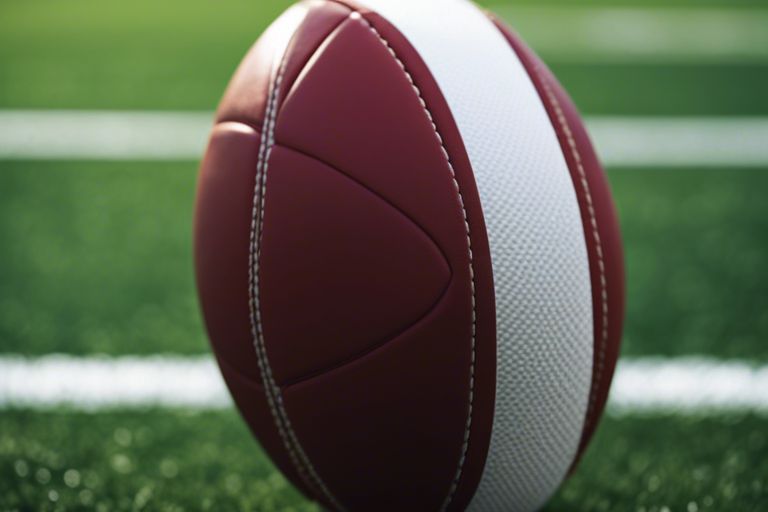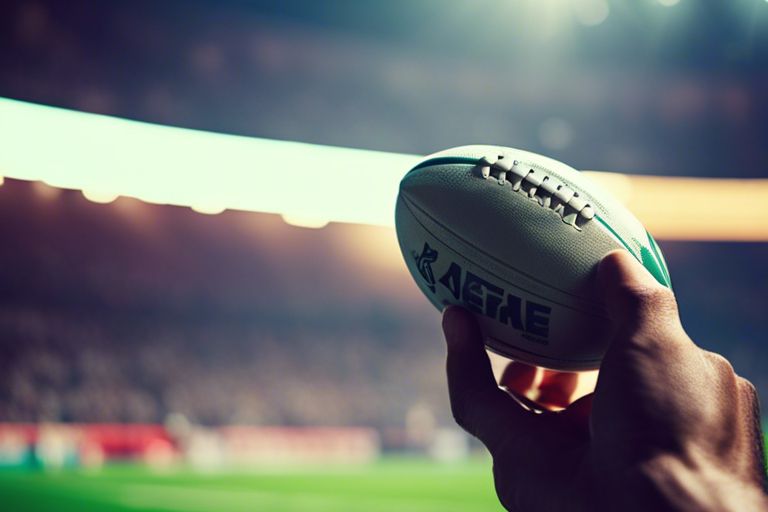Rugby players know the importance of wearing proper head gear to stay protected during intense matches. However, even with the best intentions, wearing rugby head gear incorrectly can lead to potential risks and injuries on the field. In this informative blog post, we will discuss common mistakes to avoid when wearing rugby head gear, providing necessary tips and guidelines to ensure maximum safety and effectiveness during gameplay.
Key Takeaways:
- Ensure Proper Fit: Make sure the rugby head gear fits snugly without being too tight or too loose.
- Regularly Check for Damage: Inspect the head gear for any signs of wear and tear, and replace if necessary to maintain safety.
- Secure Straps Properly: Fasten all straps securely to keep the head gear in place during play.
- Don’t Modify the Gear: Avoid altering the head gear in any way, as this can compromise its protective capabilities.
- Follow Manufacturer Recommendations: Adhere to the care instructions and guidelines provided by the manufacturer to ensure the head gear remains effective.

Selection of Rugby Headgear
One Question can arise – Does rugby headgear prevent concussion? It’s a common misconception that rugby headgear protects against concussions. While headgear can provide some impact absorption and protection against cuts and abrasions, it does not guarantee prevention of concussions.
Understanding Different Types and Purposes
- Rugby headgear comes in various types, each designed for a specific purpose:
- Scrum Caps: Usually worn by forwards to protect the ears during scrums.
- Headguards: Provide overall head protection with additional padding.
- Skin Caps: Thin and lightweight for minimal protection against cuts and abrasions.
- 3D Headguards: Contour to the shape of the head for a snug fit.
- Full Helmets: Offering full coverage and protection for the head and ears.
After understanding the different types and their purposes, players can choose the most suitable headgear based on their playing position and personal preference.
Tips on Sizing and Fit
- When selecting rugby headgear, make sure it fits snugly without being too tight, allowing for a full range of motion and visibility.
On the quest for the perfect fit, players should measure their head circumference and refer to the manufacturer’s sizing guide to ensure optimal comfort and safety. The right fit can enhance performance by providing proper protection without compromising comfort.
Another
It is important to regularly check the headgear for any signs of wear and tear, and replace it when necessary to maintain its protective qualities. Be mindful of, the fit and condition of your rugby headgear can significantly impact its effectiveness in keeping you safe on the field.

Wearing Rugby Headgear
Even though some players may question the necessity of wearing headgear in rugby, research published in Attitudes towards protective headgear in UK rugby union emphasizes the importance of protective gear in preventing head injuries on the field.
Correct Positioning on the Head
Rugby headgear should be positioned correctly on the head to optimize its protective qualities. Ensuring a snug fit without being too tight can help absorb impact and reduce the risk of head injuries during play.
Ensuring Adequate Ventilation and Comfort
An necessary aspect of wearing rugby headgear is ensuring adequate ventilation and comfort. While protection is crucial, discomfort or overheating can affect performance. It is necessary to select headgear with proper ventilation and materials that wick away moisture to keep players cool and focused on the game.
Correct positioning of the headgear ensures that it provides the intended protection without compromising comfort. Players should adjust straps and padding to achieve a secure fit without causing discomfort or restricting movement. Choosing headgear specifically designed for rugby with ventilation features can enhance comfort during gameplay.
Maintenance and Care of Rugby Headgear
Many rugby players debate on whether headguards should be compulsory in the game. However, regardless of personal preferences, taking care of your rugby headgear is crucial to ensure its effectiveness and longevity on the field.
Cleaning Best Practices
Headgear should be regularly cleaned to maintain hygiene and prevent the buildup of bacteria and odors. It is recommended to hand wash the headgear using a mild detergent and warm water. Avoid machine washing as it can damage the headgear’s structure. After washing, allow the headgear to air dry completely before storing it in a cool, dry place.
Inspection and Replacement Schedule
Best practice dictates that rugby headgear should be inspected before and after each use for any signs of wear and tear, such as fraying straps or loose padding. Additionally, it is advisable to have a scheduled replacement plan for your headgear. Depending on the frequency of use and the intensity of matches, consider replacing your headgear at least once a year to ensure optimal protection.
Replacement of headgear is crucial to maintain its protective qualities. Over time, the materials may deteriorate or lose their impact-absorbing capabilities, compromising the safety they provide. Investing in a new headguard is a small price to pay for the peace of mind knowing that you are adequately protected during gameplay.

Common Wearing Errors
Overlooking Proper Adjustment Techniques
Your rugby head gear is only as effective as its fit. Adjustment techniques are often overlooked, leading to improper protection. Make sure to snugly adjust chin straps, ensuring the helmet fits securely on your head without being too tight. Neglecting this step can compromise the gear’s ability to safeguard you during gameplay.
Ignoring Signs of Wear and Damage
An important aspect of rugby head gear maintenance is regularly inspecting for signs of wear and damage. Cracks, tears, or loose padding can significantly reduce the protective capabilities of your gear. Ignoring these warning signs puts you at risk of injury. It is crucial to replace any damaged gear promptly to maintain your safety on the field.
The durability and effectiveness of rugby head gear rely on proper care and maintenance. By being vigilant and addressing issues promptly, you can ensure your gear provides optimal protection during intense gameplay.
Summing up
As a reminder, when wearing rugby head gear, it is crucial to avoid common mistakes such as choosing the wrong size, not properly securing the straps, wearing damaged gear, relying solely on the headgear for protection, and not regularly checking for wear and tear. By avoiding these mistakes, players can ensure their safety and reduce the risk of head injuries while playing rugby.
FAQ
Q: What are common mistakes to avoid when wearing rugby head gear?
A: When wearing rugby head gear, it is important to avoid the following common mistakes:
- Not wearing the head gear properly: Make sure the head gear is fitted snugly and securely to provide maximum protection.
- Using head gear that is old or damaged: Inspect your head gear regularly and replace it if you notice any signs of wear and tear.
- Ignoring proper maintenance: Clean your head gear regularly according to the manufacturer’s instructions to ensure hygienic use.
Q: How should I choose the right rugby head gear?
A: When dicking out rugby head gear, keep the following factors in mind:
- Size and fit: Ensure the head gear fits securely and comfortably without hindering your vision or movement.
- Quality and certification: Look for head gear that meets safety standards and is approved by relevant sporting associations.
- Material and design: Choose head gear made of quality, durable materials that provide adequate protection without compromising comfort.
Q: Can wearing rugby head gear prevent all head injuries?
A: While rugby head gear can help reduce the risk of certain head injuries, it is not foolproof. It is important to remember that no protective gear can guarantee complete protection against all potential injuries. Players should always prioritize safe and responsible gameplay to minimize risks on the field.




